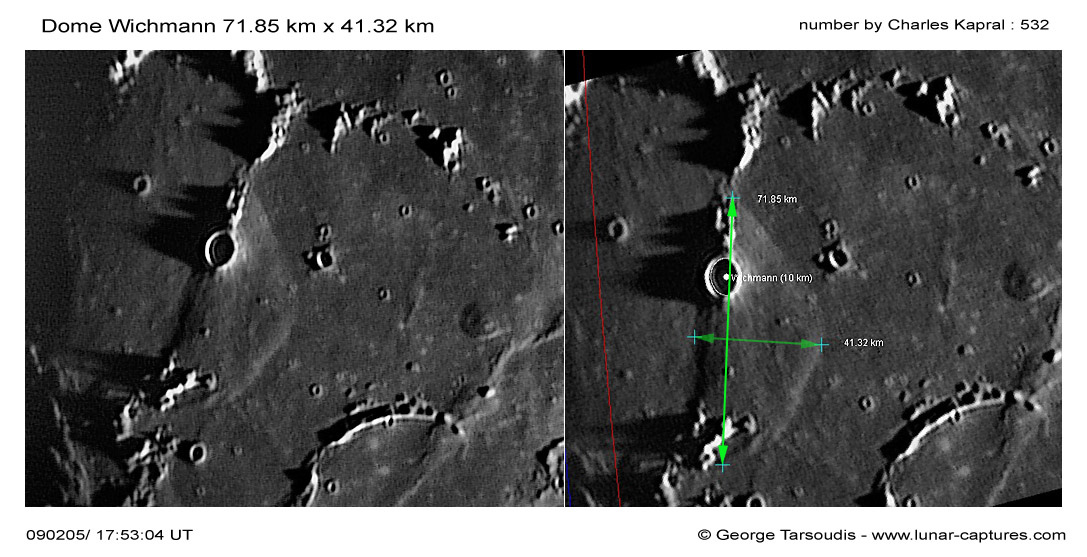Difference between revisions of "March 20, 2009"
| Line 1: | Line 1: | ||
__NOTOC__ | __NOTOC__ | ||
=Swell Wichmann= | =Swell Wichmann= | ||
| − | |||
<!-- ws:start:WikiTextHeadingRule:2:<h1> --> | <!-- ws:start:WikiTextHeadingRule:2:<h1> --> | ||
<!-- ws:start:WikiTextLocalImageRule:8:<img src="/file/view/LPOD-Mar20-09.jpg/63604084/LPOD-Mar20-09.jpg" alt="" title="" style="width: 900px;" /> -->[[File:LPOD-Mar20-09.jpg|LPOD-Mar20-09.jpg]]<!-- ws:end:WikiTextLocalImageRule:8 --><br /> | <!-- ws:start:WikiTextLocalImageRule:8:<img src="/file/view/LPOD-Mar20-09.jpg/63604084/LPOD-Mar20-09.jpg" alt="" title="" style="width: 900px;" /> -->[[File:LPOD-Mar20-09.jpg|LPOD-Mar20-09.jpg]]<!-- ws:end:WikiTextLocalImageRule:8 --><br /> | ||
| − | <em>image by [mailto:gtarsoudis@axd.forthnet.gr George Tarsoudis], Greece</em><br /> | + | <em>image by [mailto:gtarsoudis@axd.forthnet.gr" rel="nofollow George Tarsoudis], Greece</em><br /> |
<br /> | <br /> | ||
Although its existence is not a secret, this large mare swell near Wichmann in southern Oceanus Procellarum has not been well documented. George now uses one of his images and [http://ltvt.wikispaces.com/LTVT LTVT] to illustrate the shape and size of this large feature. The 10 km wide simple crater WIchmann provides scale and George's measures show the D-shaped swell is about 70 km long and 40 km wide. Like most swells it is associated with small hills - above and below - that are remnants of crater rims or ridges that have otherwise been buried by mare lavas. Somehow, contact with such buried topography seems to form swells. On Earth, very small versions of swells are hollow - the lava gets lightly uplifted, leaving a void underneath. I doubt if huge lunar swells like this one contain vast empty spaces, but the traditional alternative is that they are laccoliths, places where additional magma has intruded under the surface lava, lifting it up. I don't know why intrusions would be more common adjacent of nearly buried ridges - do you?<br /> | Although its existence is not a secret, this large mare swell near Wichmann in southern Oceanus Procellarum has not been well documented. George now uses one of his images and [http://ltvt.wikispaces.com/LTVT LTVT] to illustrate the shape and size of this large feature. The 10 km wide simple crater WIchmann provides scale and George's measures show the D-shaped swell is about 70 km long and 40 km wide. Like most swells it is associated with small hills - above and below - that are remnants of crater rims or ridges that have otherwise been buried by mare lavas. Somehow, contact with such buried topography seems to form swells. On Earth, very small versions of swells are hollow - the lava gets lightly uplifted, leaving a void underneath. I doubt if huge lunar swells like this one contain vast empty spaces, but the traditional alternative is that they are laccoliths, places where additional magma has intruded under the surface lava, lifting it up. I don't know why intrusions would be more common adjacent of nearly buried ridges - do you?<br /> | ||
<br /> | <br /> | ||
| − | <em>[mailto:tychocrater@yahoo.com Chuck Wood]</em><br /> | + | <em>[mailto:tychocrater@yahoo.com" rel="nofollow Chuck Wood]</em><br /> |
<br /> | <br /> | ||
<strong>Technical Details</strong><br /> | <strong>Technical Details</strong><br /> | ||
| Line 15: | Line 14: | ||
<strong>Related Links</strong><br /> | <strong>Related Links</strong><br /> | ||
Rükl plate [http://the-moon.wikispaces.com/Rukl+41 41]<br /> | Rükl plate [http://the-moon.wikispaces.com/Rukl+41 41]<br /> | ||
| − | George's [http://www.lunar-captures.com website]<br /> | + | George's [http://www.lunar-captures.com" rel="nofollow website]<br /> |
<hr /> | <hr /> | ||
Revision as of 19:05, 4 January 2015
Swell Wichmann

image by " rel="nofollow George Tarsoudis, Greece
Although its existence is not a secret, this large mare swell near Wichmann in southern Oceanus Procellarum has not been well documented. George now uses one of his images and LTVT to illustrate the shape and size of this large feature. The 10 km wide simple crater WIchmann provides scale and George's measures show the D-shaped swell is about 70 km long and 40 km wide. Like most swells it is associated with small hills - above and below - that are remnants of crater rims or ridges that have otherwise been buried by mare lavas. Somehow, contact with such buried topography seems to form swells. On Earth, very small versions of swells are hollow - the lava gets lightly uplifted, leaving a void underneath. I doubt if huge lunar swells like this one contain vast empty spaces, but the traditional alternative is that they are laccoliths, places where additional magma has intruded under the surface lava, lifting it up. I don't know why intrusions would be more common adjacent of nearly buried ridges - do you?
" rel="nofollow Chuck Wood
Technical Details
10 inch f/6.3 Newtonian + DMK 21AF04 camera + barlow 3X + Red filter; Registax v.5 beta, seeing 3/5 and transparency 4/5.
Related Links
Rükl plate 41
George's " rel="nofollow website



